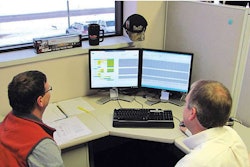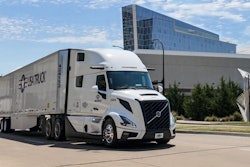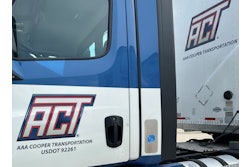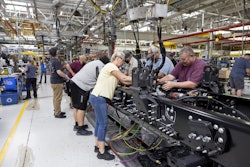Area Transportation
Chesterton, Ind.
Paying for safety
Flatbed hauler uses CSA performance to modify driver behavior
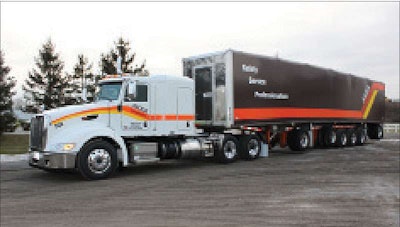
Several years ago when the Federal Motor Carrier Safety Administration first released details about its Compliance Safety Accountability safety system, Area Transportation took notice. In 2008, the company modified its proprietary software system to monitor driver compliance against CSA’s points-driven weighting system while still operating under the previous SafeStat measurement system.
Area Transportation quickly noticed key differences between the outgoing SafeStat and CSA, primarily the number of non-Out-of-Service violations that would be included in CSA. “CSA was clearly going to be a game-changer,” says Kevin Mullen, director of safety, human resources and recruiting. “To ignore it would be stupid.”
As a former motor carrier investigator in Massachusetts, Mullen understands the inherent problems with commonly accepted driver pay structures. “As an investigator, I have seen the carnage that stems from commercial motor vehicle crashes, and I understand how law enforcement works to reduce those crashes and why CSA violations carry the weight they do – that background makes me a better safety director, I hope,” he says. “Anybody that has been in this business understands that the way over-the-road drivers get paid, whether it’s by the mile or as a percentage of the load, it can create incentives to exhibit behaviors that CSA tries to identify and discourage.”
Mullen says speeding and following too closely are two of the most common violations that result from a pay-per-mile rate and also are the two most likely to trigger traffic stops and inspections.
“We operate in some heavily policed areas in Michigan, Ohio, Illinois and Indiana,” he says. “To reduce speeding violations and other violations that result from being pulled over is to keep speeds under control and maintain safe following distances.”
In an effort to improve its CSA performance continually, Area Transportation set out to identify a way to discourage speeding and other bad driving behaviors that impact driver safety performance – and ultimately the company’s own CSA scores – while at the same time offsetting the loss of driver wages as a result of practicing safer driving habits.
Boosting pay for safety
Last July, Area Transportation unveiled a new pay program that rewards safe drivers with a pay boost based on CSA performance. The purpose, says Mullen, is to “incentivize safe behaviors by rewarding drivers financially for not speeding and not getting violations on roadside inspections.”
While FMCSA doesn’t release driver scores, Area Transportation has updated its proprietary software to mirror the CSA points and weighting system in order to get an accurate performance measurement for each of its 150 company drivers.
Area Transportation rolls out new CSA-based pay structure to discourage company drivers from engaging in unsafe driving practices and incentivize them to adhere to its new safety program.
“FMCSA has invested a great deal of time and money in CSA in an effort to identify unsafe drivers and carriers,” says Mullen. “We believe the science behind CSA is valid, and we would be silly not to use the program as a basis to identify and reward our safe drivers.”
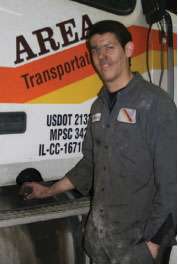 Area Transportation’s new CSA-based bonus program for company drivers has placed an increased emphasis on the importance of pre-trip inspections and maintenance programs.
Area Transportation’s new CSA-based bonus program for company drivers has placed an increased emphasis on the importance of pre-trip inspections and maintenance programs.To qualify for Area Transportation’s new program, a company driver has to demonstrate five years of accident-free performance. Current drivers and new recruits with a preventable accident on their driving record won’t be eligible until the five-year window elapses.
Drivers also have to demonstrate strict tolerance to a low CSA point threshold in Area Transportation’s program. Drivers with 10 or fewer CSA points receive a 1 percent increase in base pay, while drivers with 11 to 20 CSA points receive a 0.5 percent increase.
The threshold intentionally is demanding in order to modify driver behavior. Even a single seatbelt violation – which carries a severity weighting of 7 and a time weighting of 3, for a total of 21 points – would disqualify the driver from the company’s CSA bonus program for six months. “We set the bar to where we would get the desired results,” says Mullen. “We know they are doable – we spent a great deal of time figuring out where those thresholds needed to be to improve performance.”
New drivers that satisfy the five-year safe driving record are eligible for the bonus program immediately based on their Pre-Employment Screening Program violations. Area Transportation monitors driver CSA performance on a quarterly basis to determine eligibility. Drivers whose scores rise above the 10- and 20-point thresholds will see their bonus decrease – or lose it altogether.
“One percent over a quarter may not sound like much, but over a year they’re looking at potentially $7,000 or $8,000 in pay increases,” says Mullen. “That’s a significant incentive.”
Area Transportation’s first quarterly bonus program began last Oct. 1. At the time, 19 drivers qualified for the 1 percent bonus, while six drivers qualified for the 0.5 percent bonus. On the second evaluation that took place Jan. 1, the company had 29 drivers qualify for the 1 percent bonus and four drivers qualify for the 0.5 percent bonus.
“We would be silly not to use the (CSA) program as a basis to identify and reward our safe drivers.”
– Kevin Mullen, director of safety, human resources and recruiting
In the five months since the program began, Area Transportation already has seen positive results. Drivers are paying closer attention to their pre-trip inspections and are being more proactive in working with the company’s maintenance department to get repairs done quickly. While it’s too soon to determine the CSA pay structure’s impact on recruiting, it only can help attract drivers who feel they can succeed under the program.
Area Transportation’s CSA bonus program currently is available only to company drivers, but the carrier plans to roll out a version for its independent contractors, who typically are paid by the load. The company plans to offer them a 1 or 2 percent bonus for meeting the same 20- and 10-point thresholds as company drivers.
CCJ Innovators profiles carriers and fleets that have found innovative ways to overcome trucking’s challenges. If you know a carrier that has displayed innovation, contact Jeff Crissey at [email protected] or 800-633-5953.





